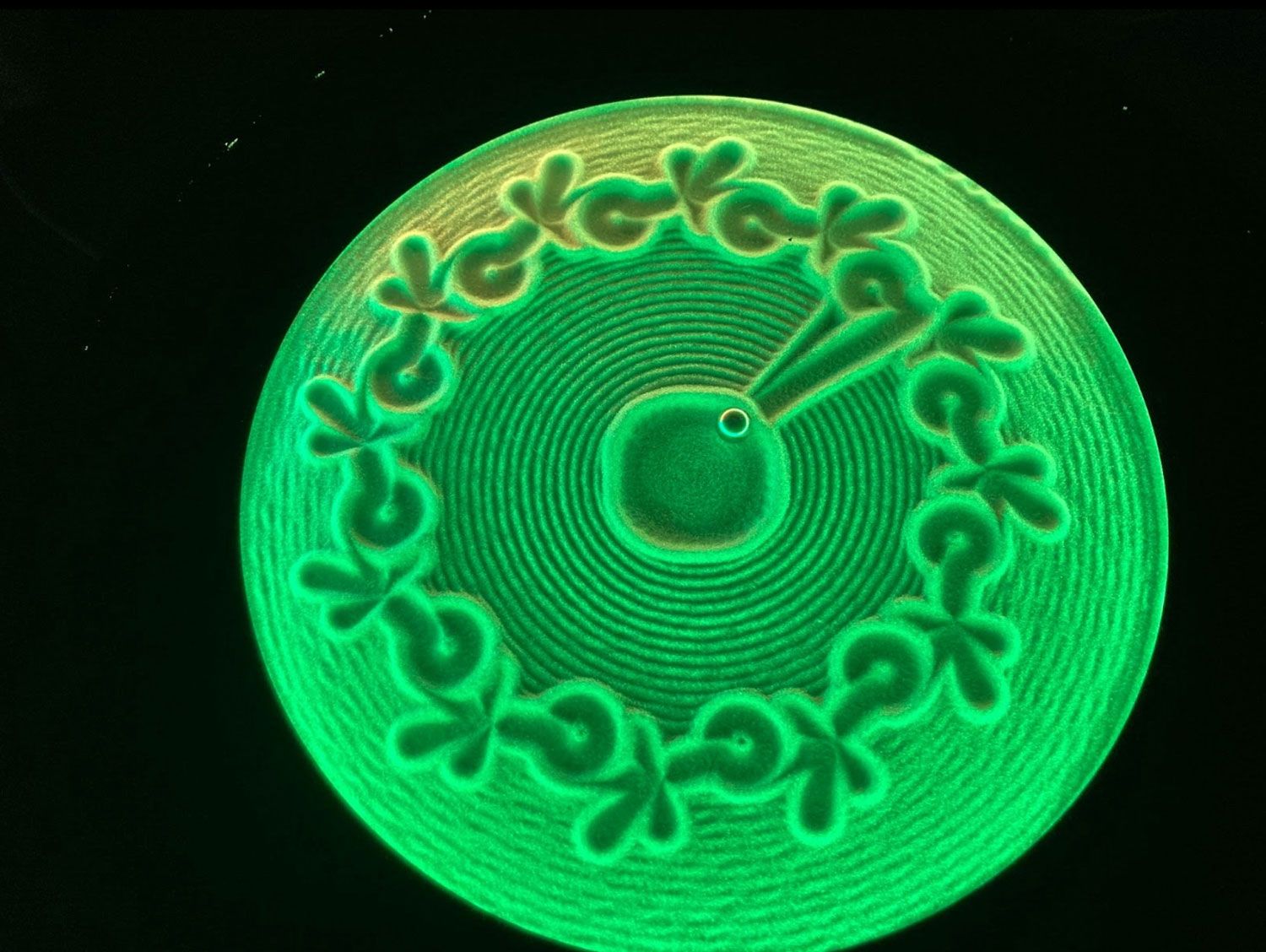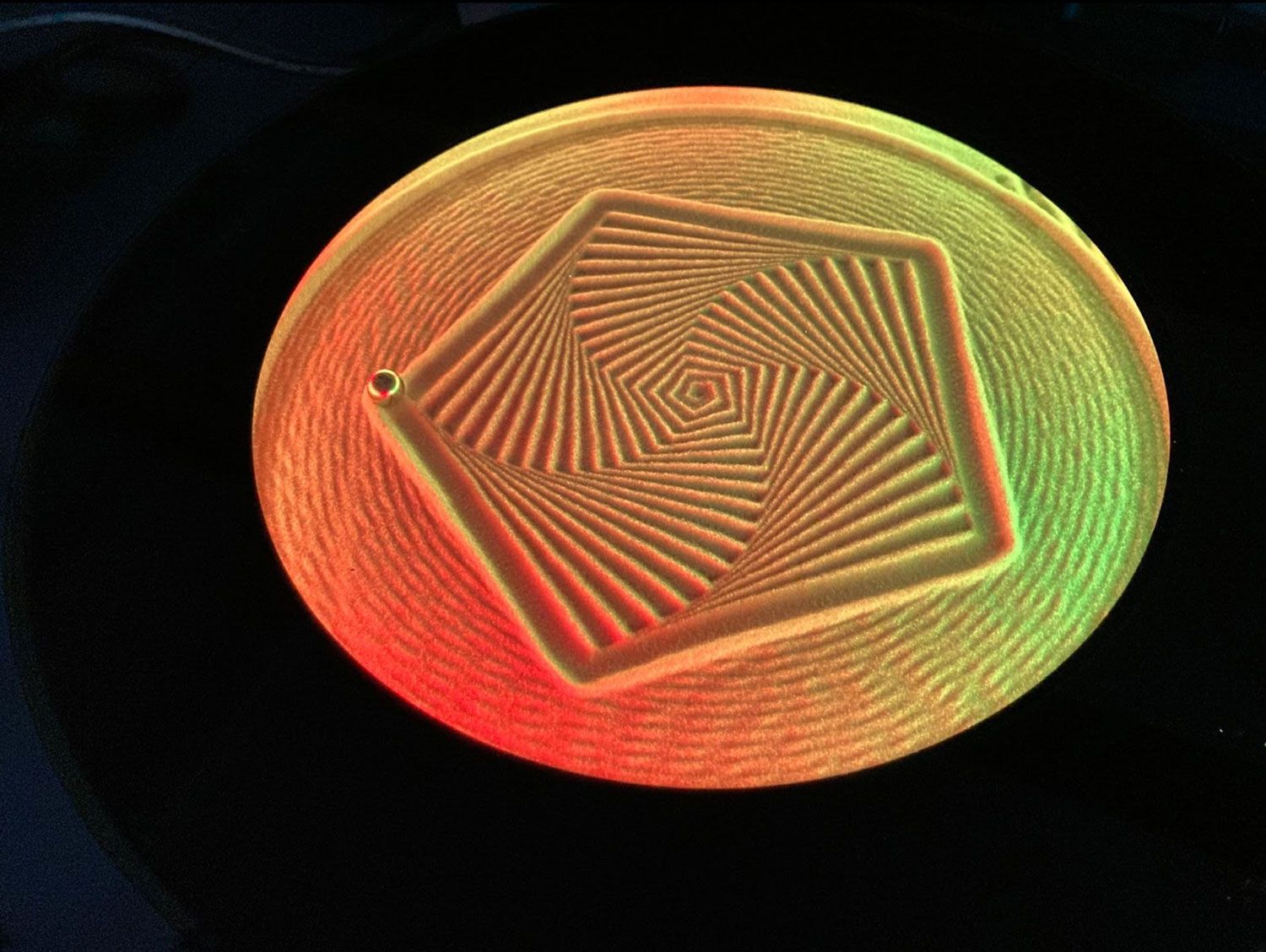Mathematics/Arts and crafts
Coding art with block-based programming
By programming geometric shapes, students create code art on a sand printer. We use block-based programming similar to Scratch/MakeCode. Finally, the students present the results in an exhibition.
The offer is supported by Sparebankstiftelsen DnB.
Target group : 5.-7. steps
Number : Max. 28 students - the students work together in pairs
Duration : 75 minutes
Subject area : Mathematics, arts and crafts and natural sciences
In the event of non-attendance without cancellation seven days before the day of attendance, the client will be invoiced a fee of NOK 500.
Curriculum 5-7. steps:
Mathematics - after 5th grade:
- create and program algorithms using variables, conditions and loops.
Mathematics - after 6th grade:
- use variables, loops, conditions and functions in programming to explore geometric shapes and patterns.
Arts and crafts - after 7th grade:
- use programming to create interactivity and visual expression
Science - after 7th grade:
- explore, create and program technological systems that consist of parts that work together.
What happens in this teaching program?
Geometric shapes and patterns are a theme in both mathematics and arts and crafts. In this course, students use block-based programming to create algorithmic visual art. The design is printed on a very special printer where a ball rolls on a sand surface and leaves traces of its movement. The process will be based on creative challenges, trial and error, and provides a large scope for expressing oneself aesthetically.
The teaching plan is particularly relevant to the new curriculum (LK20) by combining arts and crafts with mathematics using programming.
Description of the lesson:
Intro (approx. 30 min):
- Brief introduction to algorithmic art and about using code as a brush
- Introduction to block-based programming and the sand printer Sisyphus
- Competition where students are given five challenges that they must solve using programming.
- Joint review of the tasks
Creative programming (approx. 30 min):
- The students create their own creative design based on their own ideas and print them on the sand printer
We want you as a teacher to be active, participating and curious with the children during the visit. The students get the best results if they come prepared, so feel free to show the students pictures or videos, tell them about what will happen, and check whether there is associated pre- and post-work for the teaching plan
You as a teacher are responsible for the group during the entire visit.
Explainer is responsible for implementing the program. The teacher has overall responsibility for the students. You may be asked to help along the way.
If you want an invoice, include the resource number and the correct invoice address. You do not need to bring computers.
Preparations
One of the teachers in the group approaches the reception. We will then register that you have arrived and you will be allocated a cloakroom space and possibly cabinet for locking up valuables.
Arrive at the museum no later than 10 minutes before the start of the program. Let us know if you will be delayed by phone. 22 79 60 00 . If you arrive late, the learning offer may be shortened or cancelled.
Click here to find the way to The Norwegian Museum of Science and Technology .
At The Norwegian Museum of Science and Technology the same rules apply as at school/kindergarten. We will
- be role models for each other
- be kind to each other and the exhibits
- use consensus
- don't run.
ATTENTION: Everything behind barriers must not be touched.
Then we all have fun and contribute to a good learning experience. If you decide that your group can visit the museum shop, the teacher must be present as long as some of the children are there.
You can eat the packed lunch in different places; in the cafe, at the reception and outside the museum entrance. It is not allowed to eat or drink in the exhibitions.
Kindergartens and schools can pay by cash/card on arrival or bring an invoice.
For invoices, you must include the requisition or resource number and invoice address.
You meet one of us!

Catharina

Øystein

Astrid

John

Linda
Preparation:
As preparatory work, students can create "random art" that prepares them for what they will be doing.
For this activity they need:
- one sheet
- a cube
- a ruler
- a pencil
Do this:
- Put a cross in the middle of the sheet. Place a ruler from the intersection
- Roll the die
- Draw a line with the pencil as many cm as the cube shows.
- Rotate the ruler 90 degrees.
- Repeat 2-4 as many times as you want
- Study the result and compare with the neighbours.
Finishing work:
As follow-up work, the class can use the software we used in the lesson by visiting this website . For teaching, you can use our teaching resources (block or Python) which are presented as Google Slides.




